Wake Forest College Birthplace
Introduction
Text-to-speech Audio
Images
The original plantation house of Dr. Calvin Jones. After the college was founded, it was the home of Samuel Wait and his family, then was turned into a medical study building, then became a boys' dorm until the college's move to Winston-Salem.
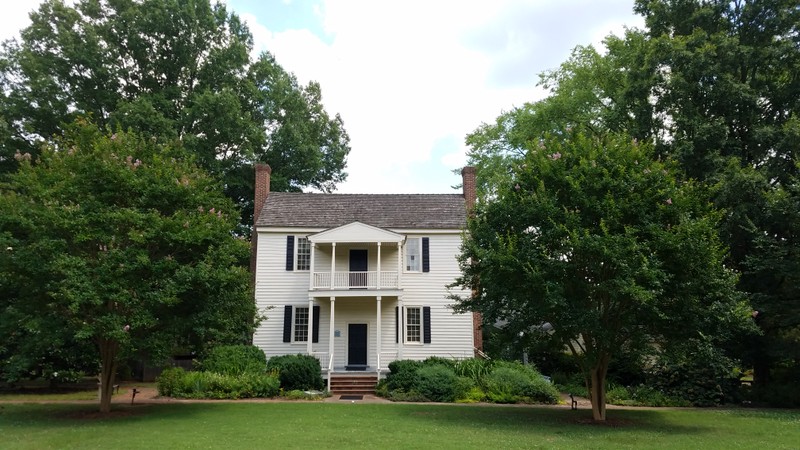
The old campus well, built around the turn of the 20th century.
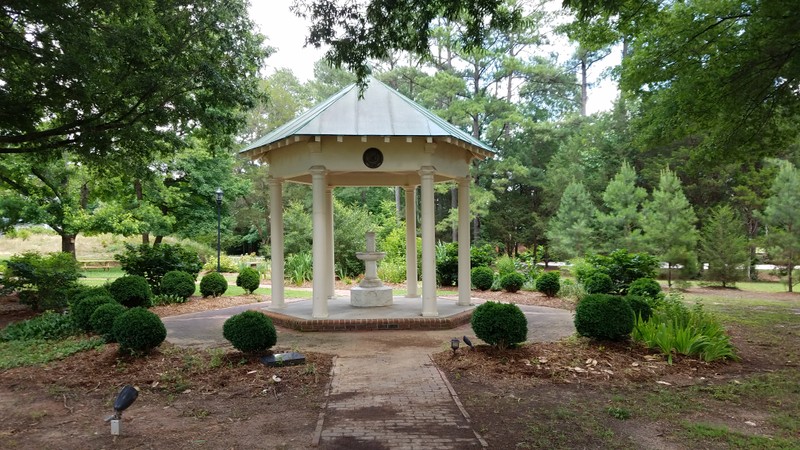
The museum of the college, opened in 2010, is host to a multitude of artifacts and pieces from the history of the college.
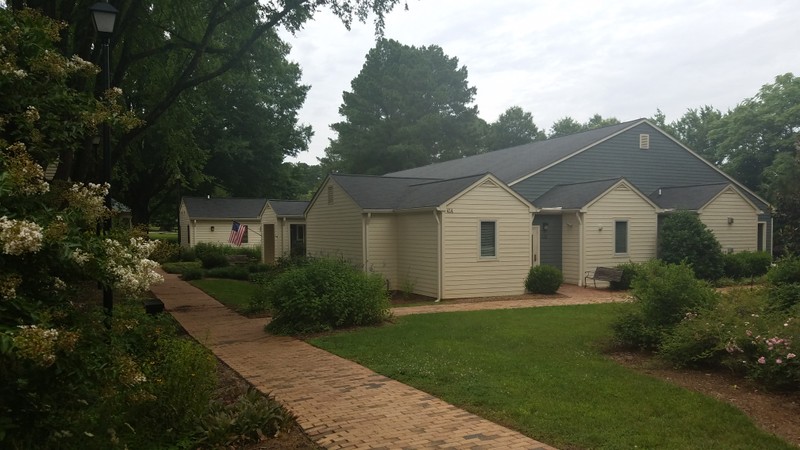
Samuel Wait's personal chest, which he brought with him on his many travels, raising money for the college.
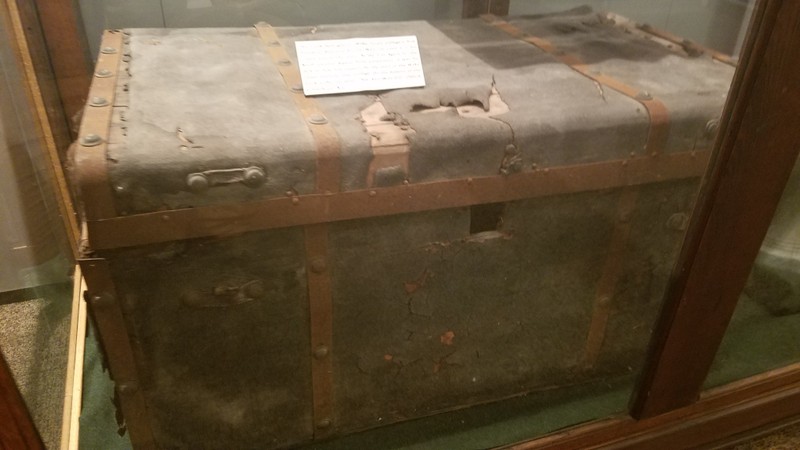
"Doctor" Tom Jeffries, a custodian of the college from 1884 to 1927, was beloved by the students (who gave him the honorary title of "Doctor") and faculty alike. Built the memorable stone wall around the campus.
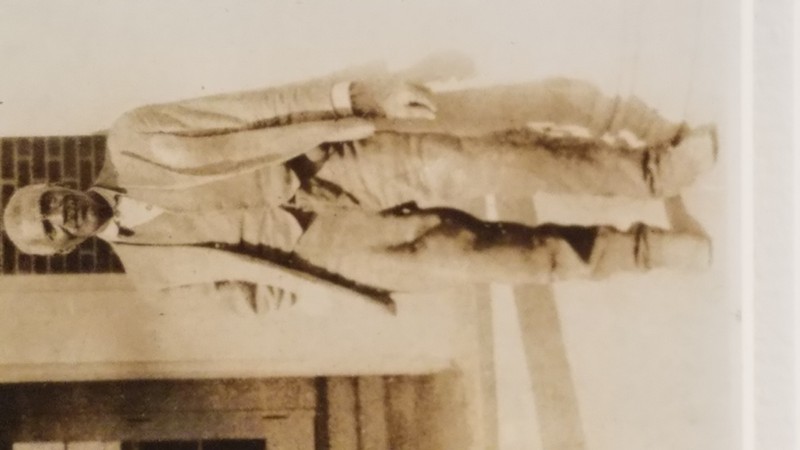
A copy of one of Jeffries' speeches to the students of the college.
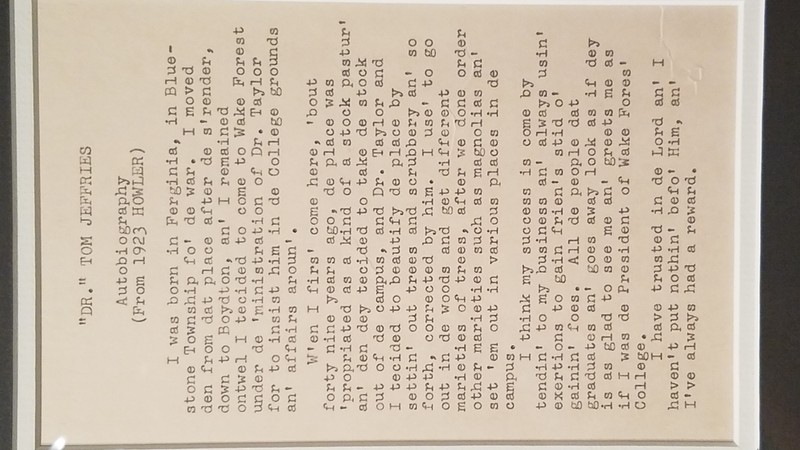
Backstory and Context
Text-to-speech Audio
Wake Forest University was not always located in Winston-Salem, but was actually founded in the town that it created. In 1833, the North Carolina Baptist State Convention, at Cartledge Creek Baptist Church, founded a school to educate ministers and laymen named Wake Forest Institute of Manual Labor.1 The land on which the school was to be built was bought by the convention from Dr. Calvin Jones, located in an area north of the city of Raleigh, then referred to as the "Forest of Wake." The school would require all students to work a half a day of manual labor, as the school was located on plantation land.2
The convention sought to acquire a charter from the North Carolina legislature in December of 1833. Coincidentally, at the exact same legislature session, a different group requested a charter for a Greensboro Academy and Manual Labor School. Despite staunch opposition throughout the process, both schools received charters, Wake Forest receiving theirs on December 5.3
Samuel Wait (1789-1867), the first principal/president of the college, served a term from 1839-1845. As president, he participated in the manual labor of the school alongside the students until its abolishment. He was constantly traveling, raising funds for the school due to its financial situation as a newly founded institution. Immediately after his resignation as president of the college, he became chairman of the board of trustees and continued advocating for the school's welfare.4
In 1838, the school did away with the manual labor requirement and the school became a full liberal arts college, known as Wake Forest College. In 1862, however, the school closed down, as many of its students and faculty were part of the American Civil War conflict. The school had begun to grow and expand; it continued to do so afterward, along with the community surrounding it, thus creating what is now known as the town of Wake Forest.
In the following years, the school added a School of Law (1894) and a School of Medicine (1902, became Bowman School of Medicine in 1941), and in 1949, boasted a student body of over 2,000, with a campus, academic programs, and athletic programs to match. With generous contributions from Z. Smith Reynolds Foundation of Winston-Salem, the Baptist State Convention, and the trustees and board members of the college itself, the college completed its move to Winston-Salem in 1956, and becoming Wake Forest University in 1967. 5
Today, the buildings of the former Wake Forest College are a part of the Southeastern Baptist Theological Seminary, having been sold to the school at the time of the college's move to Winston-Salem. The original plantation building, however, has been converted into a free, public museum for the community of Wake Forest.6
Sources
1- Powell, William S.. Encyclopedia of North Carolina. Chapel Hill, NC. University of North Carolina Press, 2006. "Wake Forest University"
Cartledge Creek Baptist Church. North Carolina Highway Historical Marker Program. Accessed June 06, 2017. http://www.ncmarkers.com/Markers.aspx?MarkerId=K-42.
2- Wake Forest University. North Carolina Highway Historical Marker Program. Accessed June 06, 2017. http://www.ncmarkers.com/Markers.aspx?MarkerId=J-50.
3- House Journal. 1833-1834. Raleigh, North Carolina. North Carolina Historical Commission.
4- Wachs, W. Ronald. Wait, Samuel. NCpedia. Accessed June 17, 2017. http://www.ncpedia.org/biography/wait-samuel.
Pascal, George Washington. "Samuel Wait and the Convention." History of Wake Forest College. Vol. I. Wake Forest, N.C.: Wake Forest College. 1935. 694. http://wfu.tizrapublisher.com/history-of-wake-forest-college-volume-i/38 (accessed September 30, 2013).
Wake Forest University. North Carolina Highway Historical Marker Program. Accessed June 06, 2017. http://www.ncmarkers.com/Markers.aspx?MarkerId=J-50.
Paschal, George W. History of Wake Forest College. Vol. 1 (1834-1865). Providence, RI. Tirza.
“Wake Forest University.” William S. Powell, ed. Encyclopedia of North Carolina (University of North Carolina Press: Chapel Hill, NC 2006).
Williams, Shane. Wake Forest University. NC History project. Accessed June 14, 2017. http://northcarolinahistory.org/encyclopedia/wake-forest-university/.
6- Wake Forest Museum. Accessed June 18, 2017. https://wakeforestmuseum.org/.
